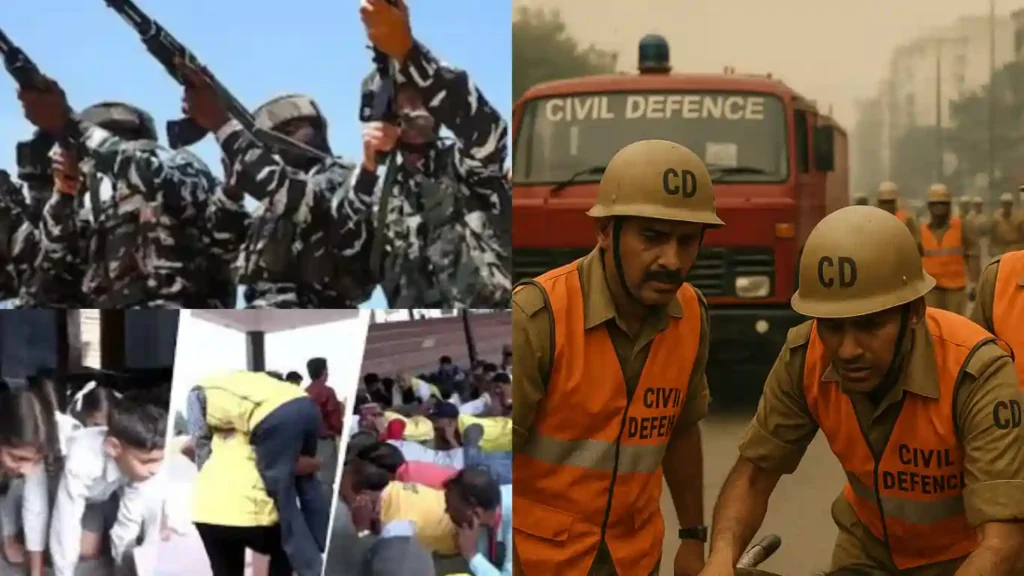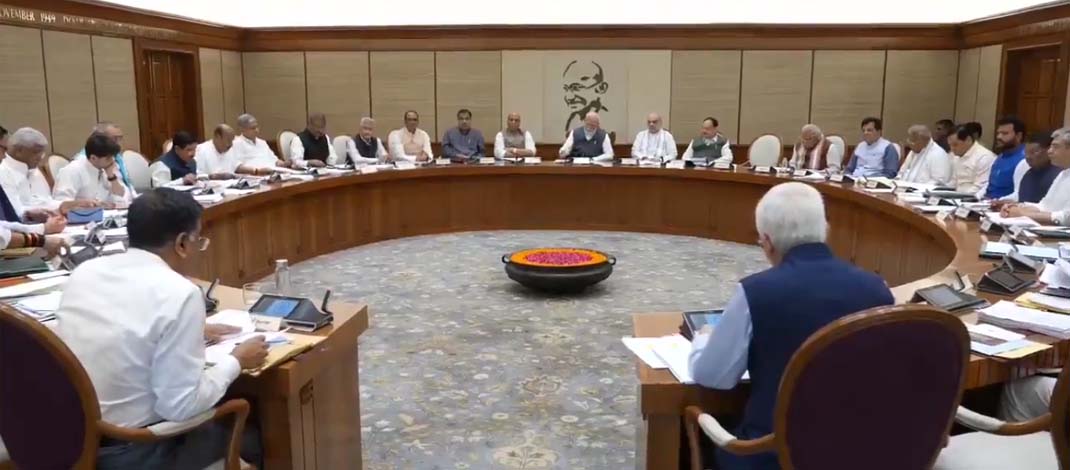- Courses
- GS Full Course 1 Year
- GS Full Course 2 Year
- GS Full Course 3 Year
- GS Full Course Till Selection
- Online Program
- GS Recorded Course
- NCERT (Recorded 500+ Hours)
- Polity Recorded Course
- Geography Recorded Course
- Economy Recorded Course
- AMAC Recorded Course
- Modern India, Post Independence & World History
- Environment Recoded Course
- Governance Recoded Course
- Science & Tech. Recoded Course
- International Relations and Internal Security Recorded Course
- Disaster Management Module Course
- Ethics Recoded Course
- Essay Recoded Course
- Current Affairs Recoded Course
- CSAT
- 5 LAYERED ARJUNA Mentorship
- Public Administration Optional
- ABOUT US
- OUR TOPPERS
- TEST SERIES
- FREE STUDY MATERIAL
- VIDEOS
- CONTACT US
Civil Defence Mock Drill Conducted Nationwide on May 7, 2025
Civil Defence Mock Drill Conducted Nationwide on May 7, 2025

- On May 2 and 5, 2025, the Ministry of Home Affairs (MHA) had issued directives to all States and Union Territories to conduct civil defence mock drills on May 7, 2025.
- The drill was ordered amid escalating tensions between India and Pakistan, following the Pahalgam terror attack and recent missile tests conducted by Pakistan.
- This was the first large-scale civil defence preparedness exercise since the 1971 India–Pakistan war.
What Are Civil Defence Districts?
- Civil Defence Districts are specially designated areas where civil defence plans are implemented for protecting civilians and infrastructure during emergencies.
- The districts are notified based on their strategic importance, location near borders, and presence of critical infrastructure
History of Civil Defence in India :
|
Demarcation Details:
- 259 districts were notified in 2010; in January 2023, the Centre identified 295 vulnerable towns/districts needing active civil defence measures.
- Divided into three categories:
- Category I (13 districts): Full implementation
- Category II (201 districts): Partial implementation
- Category III (45 districts): Limited implementation
States with Maximum Civil Defence Districts:
- West Bengal (32), Rajasthan (28), Assam (20), Punjab (20), Jammu & Kashmir (20)
What the May 7 Mock Drill Entailed
The drill simulated various war-like emergency scenarios and included the following activities:
- Activation of air raid warning sirens
- Crash blackout procedures (simulated blackouts in select areas)
- Hotline/radio link testing with the Indian Air Force
- Operational control and shadow control rooms were manned
- Evacuation rehearsals and civilian training sessions
- Camouflaging of critical infrastructure like power plants and military sites
- Testing civil defence services: wardens, rescue teams, firefighting units
- Clearing of bunkers and trenches
- Updating of district-wise civil defence and evacuation plans
Impact on Public Life
The mock drill had noticeable effects in several towns and districts:
- Brief power cuts were implemented to simulate crash blackouts.
- Sirens were heard in designated areas, halting traffic movement temporarily.
- Evacuation exercises were carried out in some schools, offices, and public places.
- In certain high-risk districts, people were directed to shelters and bunkers
- Mobile network disruptions, public announcements, and restricted area access occurred as part of the simulation.
Public Advisory Issued:
- Citizens were asked to remain calm, listen to official broadcasts, and follow instructions from local authorities, police, or civil defence personnel.
- People were also encouraged to keep emergency kits ready (with water, flashlight, first aid, etc.).
Legal Framework: Civil Defence Act, 1968
The drill was carried out under the provisions of the Civil Defence Act, 1968, which empowers the government during emergencies to:
- Impose curfews, restrict movement, or close public services
- Censor media, detain suspects, and control supply chains
- Requisition services, acquire property, and mobilize citizens for national duties
Government's Stated Objective
Although the MHA did not cite any direct imminent threat, the drill was part of a broader goal to:
- Assess the preparedness of states and districts under the civil defence framework
- Train civilians in wartime safety and emergency response
- Strengthen coordination among defence, police, medical, and civic agencies
The initiative had been previously endorsed by PM Narendra Modi and HM Amit Shah during the Chintan Shivir in Surajkund (October 2022), and followed up via official communication to states in January 2023.
Global Comparisons :
|
Conclusion
The nationwide civil defence mock drill conducted on May 7, 2025, was a crucial step in national preparedness, aimed at readying both the government and citizens for emergencies such as war or terrorist attacks.
While it temporarily disrupted routine public life in many districts, it demonstrated India’s resolve to proactively safeguard its population through coordinated civilian-military readiness.


